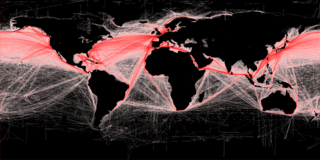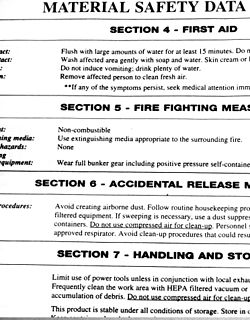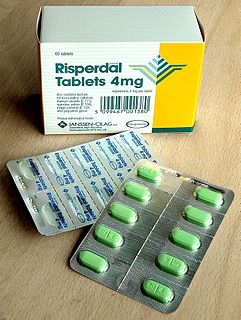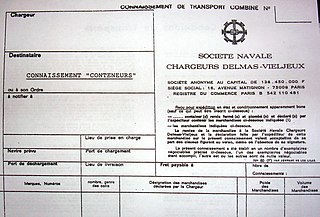Related Research Articles

Freight transport is the physical process of transporting commodities and merchandise goods and cargo. The term shipping originally referred to transport by sea but in American English, it has been extended to refer to transport by land or air as well. "Logistics", a term borrowed from the military environment, is also used in the same sense.
UN numbers are four-digit numbers that identify hazardous materials, and articles in the framework of international transport. Some hazardous substances have their own UN numbers, while sometimes groups of chemicals or products with similar properties receive a common UN number. A chemical in its solid state may receive a different UN number than the liquid phase if their hazardous properties differ significantly; substances with different levels of purity may also receive different UN numbers.

A safety data sheet (SDS), material safety data sheet (MSDS), or product safety data sheet (PSDS) are documents that list information relating to occupational safety and health for the use of various substances and products. SDSs are a widely used system for cataloging information on chemicals, chemical compounds, and chemical mixtures. SDS information may include instructions for the safe use and potential hazards associated with a particular material or product, along with spill-handling procedures. The older MSDS formats could vary from source to source within a country depending on national requirements; however, the newer SDS format is internationally standardized.

In economics, the words cargo and freight refer in particular to goods or produce being conveyed – generally for commercial gain – by water, air or land. Cargo was originally a shipload. Cargo now covers all types of freight, including that carried by rail, van, truck, or intermodal container. The term cargo is also used in case of goods in the cold-chain, because the perishable inventory is always in transit towards a final end-use, even when it is held in cold storage or other similar climate-controlled facility. The term freight is commonly used to describe the movements of flows of goods being transported by any mode of transportation.

Packaging is the science, art and technology of enclosing or protecting products for distribution, storage, sale, and use. Packaging also refers to the process of designing, evaluating, and producing packages. Packaging can be described as a coordinated system of preparing goods for transport, warehousing, logistics, sale, and end use. Packaging contains, protects, preserves, transports, informs, and sells. In many countries it is fully integrated into government, business, institutional, industrial, and personal use.
Drop shipping is a supply chain management method in which the retailer does not keep goods in stock but instead transfers its customer's orders and shipment details to either the manufacturer, another retailer, or a wholesaler, who then ships the goods directly to the customer. As in retail business, the majority of retailers make their profit on the difference between the wholesale and retail price.

Dangerous goods, abbreviated DG, are substances that when transported are a risk to health, safety, property or the environment. Certain dangerous goods that pose risks even when not being transported are known as hazardous materials.

The term cold chain or cool chain denotes the series of actions and equipment applied to maintain a product within a specified low-temperature range from harvest/production to consumption. A cold chain is a temperature-controlled supply chain. An unbroken cold chain is an uninterrupted series of refrigerated production, storage and distribution activities, along with associated equipment and logistics, which maintain a desired low-temperature range. It is used to preserve and to extend and ensure the shelf life of products, such as fresh agricultural produce, seafood, frozen food, photographic film, chemicals, and pharmaceutical products. Such products, during transport and when in transient storage, are sometimes called cool cargo. Unlike other goods or merchandise, cold chain goods are perishable and always en route towards end use or destination, even when held temporarily in cold stores and hence commonly referred to as cargo during its entire logistics cycle.
Less-than-truckload shipping or less than load (LTL) is the transportation of relatively small freight. The alternatives to LTL carriers are parcel carriers or full truckload carriers. Parcel carriers usually handle small packages and freight that can be broken down into units less than 150 pounds (68 kg). Full truckload carriers move freight that is loaded into a semi-trailer. Semi-trailers are typically between 26 and 53 feet and require a substantial amount of freight to make such transportation economical.

The Globally Harmonized System of Classification and Labelling of Chemicals (GHS) is an internationally agreed-upon standard managed by the United Nations that was set up to replace the assortment of hazardous material classification and labelling schemes previously used around the world. Core elements of the GHS include standardized hazard testing criteria, universal warning pictograms, and harmonized safety data sheets which provide users of dangerous goods with a host of information. The system acts as a complement to the UN Numbered system of regulated hazardous material transport. Implementation is managed through the UN Secretariat. Although adoption has taken time, as of 2017, the system has been enacted to significant extents in most major countries of the world. This includes the European Union, which has implemented the United Nations' GHS into EU law as the CLP Regulation, and United States Occupational Safety and Health Administration standards.
The Single-window system is a trade facilitation idea. In simple words, it allows a user to get sufficient information from one source. As such, the implementation of a single window system enables international (cross-border) traders to submit regulatory documents at a single location and/or single entity. Such documents are typically customs declarations, applications for import/export permits, and other supporting documents such as certificates of origin and trading invoices.
Hazard pictograms form part of the international Globally Harmonized System of Classification and Labelling of Chemicals (GHS). Two sets of pictograms are included within the GHS: one for the labelling of containers and for workplace hazard warnings, and a second for use during the transport of dangerous goods. Either one or the other is chosen, depending on the target audience, but the two are not used together. The two sets of pictograms use the same symbols for the same hazards, although certain symbols are not required for transport pictograms. Transport pictograms come in wider variety of colors and may contain additional information such as a subcategory number.
PeriShip is a logistics provider for the perishable food industry. It was founded in 2001, and is based in Branford, Connecticut. The company exclusively uses FedEx for transportation.
The UN Recommendations on the Transport of Dangerous Goods are contained in the UN Model Regulations prepared by the Subcommittee of Experts on the Transport of Dangerous Goods of the United Nations Economic and Social Council (ECOSOC). They cover the transport of dangerous goods by all modes of transport except by bulk tanker. They are not obligatory or legally binding on individual countries, but have gained a wide degree of international acceptance: they form the basis of several international agreements and many national laws.

Corrugated box design is the process of matching design factors for corrugated fiberboard boxes with the functional physical, processing and end-use requirements. Packaging engineers work to meet the performance requirements of a box while controlling total costs throughout the system.

Pharmaceutical packaging is the packages and the packaging processes for pharmaceutical preparations. It involves all of the operations from production through drug distribution channels to the end consumer.
The Australian Dangerous Goods Code is promulgated by The Advisory Committee on Transport of Dangerous Goods. The most current version is the seventh edition, released in 2008. Read in conjunction with accompanying national and State laws, the document creates a significant level of standardisation for the transportation of dangerous goods in Australia.

A bill of lading is a document issued by a carrier to acknowledge receipt of cargo for shipment. Although the term historically related only to carriage by sea, a bill of lading may today be used for any type of carriage of goods. A comprehensive article on Bill of Lading Bills of lading are one of three crucial documents used in international trade to ensure that exporters receive payment and importers receive the merchandise. The other two documents are a policy of insurance and an invoice. Whereas a bill of lading is negotiable, both a policy and an invoice are assignable. In international trade outside the United States, bills of lading are distinct from waybills in that the latter are not transferable and do not confer title. Nevertheless, the UK Carriage of Goods by Sea Act 1992 grants "all rights of suit under the contract of carriage" to the lawful holder of a bill of lading, or to the consignee under a sea waybill or a ship's delivery order.
A freight claim or cargo claim is a legal demand by a shipper or consignee against a carrier in respect of damage to a shipment, or loss thereof.

The Hazardous Materials Transportation Act (HMTA), enacted in 1975, is the principal federal law in the United States regulating the transportation of hazardous materials. Its purpose is to "protect against the risks to life, property, and the environment that are inherent in the transportation of hazardous material in intrastate, interstate, and foreign commerce" under the authority of the United States Secretary of Transportation.
References
- ↑ "Labelmaster's A.I.R. Shipper Compliance Package Provides Comprehensive Information on Shipping Dangerous Goods".
- ↑ "Labelmaster's Popular A.I.R. Shipper Manual Now Available For 2008".
- ↑ "Labelmaster's A.I.R. Shipper(TM) Combo Package Provides Comprehensive Information on Shipping Dangerous Goods by Air".
- ↑ "Commute Options Case Study: Labelmaster".